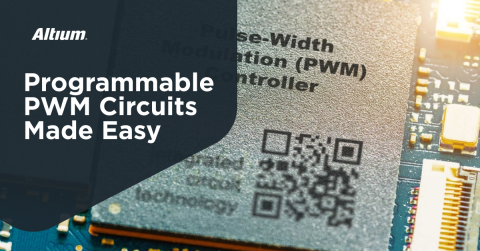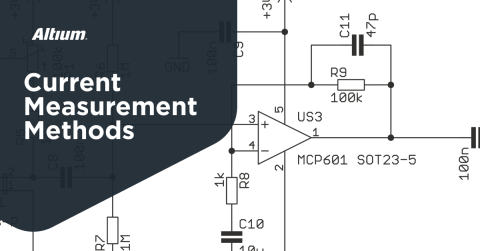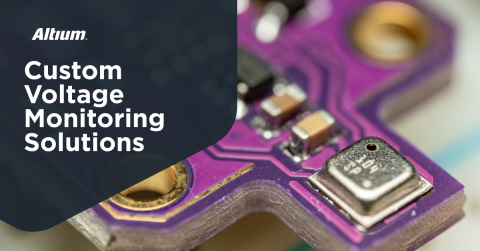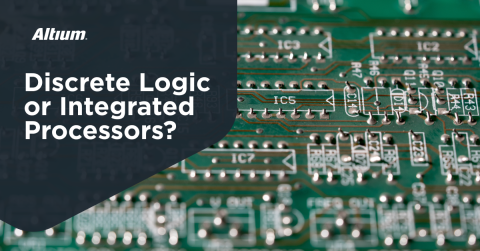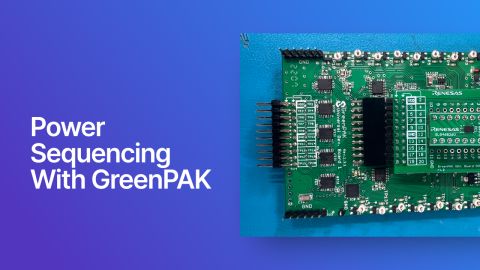What is a Programmable Mixed-Signal IC?

Integrated circuits have driven huge levels of integration, bringing digital logic and basic analog functions into the same package, known as mixed-signal ASICs. The digital side has always been programmable to some extent, with application logic being built into firmware or hard-coded into the silicon. Programmable logic as found in CPLDs or FPGAs is unique in that the core digital functions can be reconfigured and rewritten as needed, but this capability has seldom been seen in mixed-signal ASICs.
Today, the same integration has reached mixed-signal ASICs in the form of programmable mixed signal ICs. These programmable components bring functionality similar to CPLDs into mixed-signal devices, essentially allowing designers to create their own mixed-signal ASICs based on combinations of analog and digital processing blocks. This enables customization of both analog and digital functions without committing to a full ASIC design. As a result, designers gain FPGA-like flexibility in mixed-signal applications, opening up a new range of application areas that are difficult with discrete analog circuits.
Programmable Mixed-Signal Macrocells
All mixed-signal ASICs and digital processors require a set of interfaces to collect signals from the outside world. This includes digital and analog inputs, which are used to communicate with external components and capture and signals from other parts of an electronic device. Once captured, the digital data and analog signals can be processed based on logical conditions, ultimately producing an output that can be used by an embedded application in the system host.
So what’s different about programmable mixed signal ICs? The difference lies in the processing flow that can be implemented on a programmable mixed-signal chip. The core of a programmable mixed-signal IC is a set of macrocells that include combinatorial functions for processing of data. When the programmable mixed-signal chip is being configured in a development environment, the connections between each processing step are defined as physical interconnects between each macrocell.
This is similar to the process for configuring an FPGA or CPLD, where interconnects between logic blocks are configured during device programming. What’s different in programmable mixed-signal devices are the interfaces used to feed data into macrocells, as well as the macrocells themselves.
What’s in a Macrocell?
Programmable mixed-signal devices contain many types of macrocells with different functions, as well as a writable interconnect matrix that defines the connections between macrocell inputs/outputs. Some of the common functions found in programmable mixed-signal macrocells include:
- Look-up tables (LUTs)
- D flip-flops
- Counters/delay timers
- Programmable function generator
- Digital inputs
- Analog comparator
- ADC or DAC
- Programmable gain amplifier (PGA)
- Reference voltage generator
Contrast these options with a CPLD macrocell, which only contains digital logic elements like LUTs and flip-flops (typically AND or OR logic). The ability to integrate analog signal capture and processing into these macrocells is what makes mixed-signal ICs unique.
A very simple set of connections between I/Os and macrocells could look like the following:
Using the pre-programmed lookup table, the mixed-signal IC uses some digital input and a thresholding reading of an analog signal to produce an output based on the LUT values. Normally, with an MCU and a comparator/ADC, the analog signal would be read and then processed in the embedded application to determine the logic output from this same processing flow implemented in macrocells. The use of an LUT is much more power efficient and faster compared to processing the same data on a microcontroller.
As an example of what’s possible with a mixed-signal IC, take a look at the block diagram below from the SLG46620 datasheet. This programmable mixed-signal IC provides high analog and digital I/O count with multiple internal analog and digital processing macrocells. After implementing logic functions on-chip, the results can be output to the system host via a standard serial interface (SPI).
Smaller System Architecture With Mixed-Signal ICs
Mixed-signal ICs clearly consolidate analog processing blocks into a single component, which reduces the total component footprint in your PCB. This means smaller, denser mixed-signal systems are possible when core analog processing functions are implemented in a mixed-signal IC.
To underscore the point, compare the two mixed-signal system architectures shown below using Renesas GreenPAK. WIth a single programmable mixed-signal IC, the GreenPAK solution eliminates 5 ICs, 14 passives, and 2 discrete FETs.
This consolidation means that systems with GreenPAK have smaller footprint, greater power efficiency, and lower processing latency compared to using a set of discrete components. Renesas provides this kind of consolidated solution and many more in a Solution Cookbook and documented code examples for GreenPAK products.
Whether you need to build reliable power electronics or advanced digital systems, use the complete set of PCB design features and world-class CAD tools offered by Altium to implement your GreenPAK solutions. Altium provides the world’s premier electronic product development platform, complete with the industry’s best PCB design tools and cross-disciplinary collaboration features for advanced design teams. Contact an expert at Altium today!
